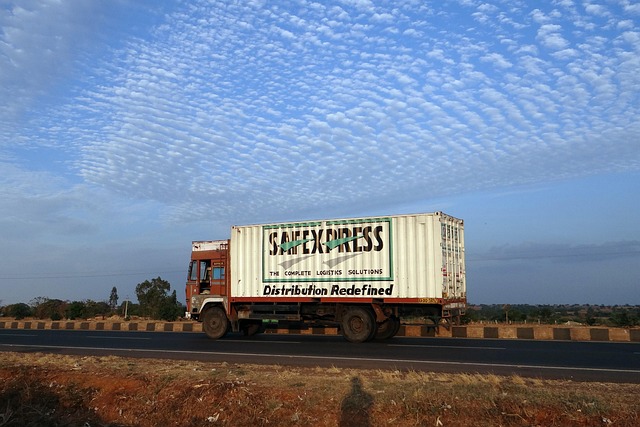Looking to register your car in California? Navigating the process can seem daunting, but with the right preparation, it’s smoother than you think. This guide breaks down the California car registration process step-by-step, from understanding key requirements to crucial VIN verification. Learn how to gather essential documents, pass inspection, and submit applications successfully. By following these instructions, you’ll be cruising towards smoothCalifornia roads in no time.
- Understanding the California Car Registration Process
- Gathering Necessary Documents for VIN Verification
- Performing a Vehicle Identification Number (VIN) Check
- Submitting Applications and Fees to the DMV
- Important Considerations and Next Steps After Registration
Understanding the California Car Registration Process

Understanding the California Car Registration Process
Registering a car in California involves several steps, ensuring your vehicle complies with state regulations. The process begins with verifying the Vehicle Identification Number (VIN) to ensure the car’s authenticity and history. This step is crucial for both safety and security, as it helps prevent theft and ensures only legitimate vehicles are on the road. A VIN inspection checks against national databases to uncover any outstanding issues or previous accidents, providing a clear picture of the vehicle’s condition.
In California, you can opt for traditional vin verification at a DMV office or explore convenient alternatives like mobile vin inspection services. The latter allows you to complete the initial VIN check from the comfort of your home or workplace, saving time and effort. Once your car passes the VIN verification, you’ll be ready to proceed with registration, including providing necessary documents and fees, ensuring your vehicle is legally registered and road-ready in the Golden State.
Gathering Necessary Documents for VIN Verification

To register your car in California, preparing for the VIN (Vehicle Identification Number) verification process is key. The first step involves gathering all essential documents related to your vehicle and its ownership history. This typically includes proof of purchase, such as a bill of sale or previous registration records. Additionally, you’ll need valid identification documents like a driver’s license or state-issued ID card.
For a smoother experience, consider utilizing mobile VIN inspection services that offer convenient solutions for busy individuals. These services provide on-demand mobile vin verification, allowing you to complete the necessary checks from the comfort of your home or workplace. This modern approach streamlines the traditional process, ensuring you have one less hassle to contend with during your car registration journey in California.
Performing a Vehicle Identification Number (VIN) Check

Before registering your car in California, performing a Vehicle Identification Number (VIN) check is a crucial step. This process involves verifying the vehicle’s history to ensure it’s safe and legal to drive. You can conduct a VIN verification through various official channels, including the California Department of Motor Vehicles (DMV) or reputable third-party services that offer mobile vin inspection and validation.
A mobile vin inspection is particularly convenient as it allows you to get the check done quickly at your location. This service involves scanning the VIN number using specialized tools to access detailed information about the vehicle’s past, including ownership history, accident records, and maintenance logs. By ensuring the car has not been reported stolen, damaged beyond repair, or had significant structural alterations, this step safeguards both you as the owner and other drivers on the road.
Submitting Applications and Fees to the DMV

Once you have gathered all necessary documents, it’s time to submit your applications and fees to the California Department of Motor Vehicles (DMV). This crucial step involves filling out specific forms for registration and providing essential information about your vehicle, including a valid Vehicle Identification Number (VIN) verification. Ensure accuracy in completing these forms to avoid delays in the registration process.
A key element in this process is conducting a VIN inspection or using a mobile VIN verifier to ensure the vehicle’s identity and history are accurately represented. This step is essential as it helps verify the vehicle’s age, model, and any previous accidents or damage, which can impact registration and insurance requirements. With these details in hand, you’re well on your way to successfully registering your car with the DMV.
Important Considerations and Next Steps After Registration

After successfully registering your car in California, there are a few crucial considerations to ensure everything remains in order. One key step is to complete a Vehicle Identification Number (VIN) verification process. This involves checking the vehicle’s unique VIN number against official databases to confirm its authenticity and history, which is essential for both legal compliance and safety. Many Californians opt for a mobile VIN verifier or inspection service for convenience—these services bring the verification process directly to your location, making it hassle-free.
Additionally, keeping accurate records of your vehicle’s registration and maintenance is vital. This includes documenting any repairs, modifications, or changes in ownership. Such documentation not only aids in future registration renewals but also serves as a comprehensive history of your car, which can be beneficial if you ever need to prove its condition or authenticity.
Registering a car in California involves several steps, from understanding the process to providing accurate documentation for VIN verification. By gathering all necessary documents and performing a vehicle identification number (VIN) check, you set the foundation for a smooth registration experience. Submitting applications and fees to the DMV completes the formalities, ensuring your vehicle is legally registered. Remember to consider important post-registration steps for continued compliance, making California car registration both efficient and informative.
